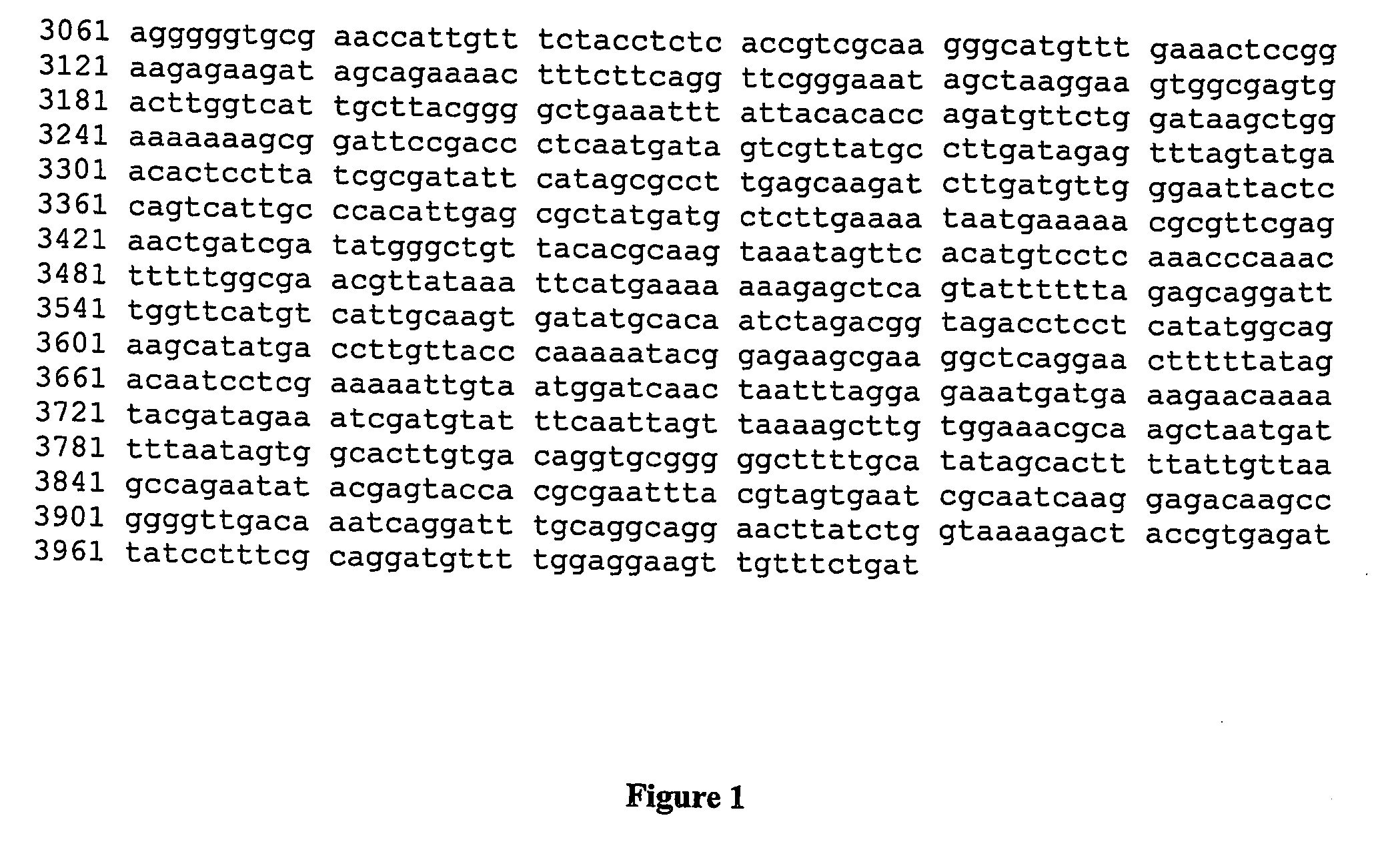Identification of streptococcus penumoniae serotypes
a technology of streptococcus pneumoniae and serotype, which is applied in the field of polynucleotides, can solve the problems of difficult development of assays which can be used to type a significant portion of i>s. pneumoniae /i>strains, and vaccines do not provide protection
- Summary
- Abstract
- Description
- Claims
- Application Information
AI Technical Summary
Benefits of technology
Problems solved by technology
Method used
Image
Examples
example 1
Serotying Based on the Polymorphisms of the 3′ End of the cpsA Gene and the 5′ End of the cpsB Gene, Combined in Some Instances with the Analysis of the wzx and / or wzy Genes
Materials and Methods
Pneumococcal Reference Panels (Table 1)
[0325] Reference panels 1-4, which consisted of 118 isolates, were kindly provided and serotyped by colleagues in Australia and Canada. All had been serotyped using the standard Quellung method and included all 23 serotypes represented in the polysaccharide vaccine, and 28 additional serotypes; there were multiple isolates of 40 serotypes and five isolates that could not be serotyped with available antisera. Reference panel 5 consisted of 21 invasive isolates from our diagnostic laboratory at the Centre for Infectious Diseases and Microbiology (CIDM), Sydney, for which serotypes were known at the beginning of the study. These five reference panels were used for the development and preliminary evaluation of molecular capsular sequence methods. Panel...
example 2
Identification of S. pneumoniae Serotypes by Analysis of the wzx and / or wzv Genes
Materials and Methods
Pneumococcal Clinical Isolates
[0369] This study was based on 92 well-characterized S. pneumoniae isolates, which represented 55 serotypes and including about 31 of 39 serotypes that were not included in Example 1. The sources of these isolates were 72 from China Medical Bacteria Culture Collection Center, Beijing, PR China; 17 from Royal College of Pathologists of Australasia, Quality Assurance Program Pty Limited, New South Wales, Australia; three from Associate Professor Geoff Hogg and Ms Jenny Davis, Microbiological Diagnostic Unit (MDU), Public Health Laboratory, Department of Microbiology and Immunology, University of Melbourne, Victoria. Conventional serotyping (CS) had been performed by donor laboratory and serotypes of the 75 strains were known at time of receipt and 23 selected isolates (including all of serotypes 27, 28F and 16A isolates and two from Example 1—which ...
PUM
| Property | Measurement | Unit |
|---|---|---|
| melting temperature | aaaaa | aaaaa |
| polymorphic | aaaaa | aaaaa |
| heterogeneity | aaaaa | aaaaa |
Abstract
Description
Claims
Application Information
 Login to View More
Login to View More - R&D
- Intellectual Property
- Life Sciences
- Materials
- Tech Scout
- Unparalleled Data Quality
- Higher Quality Content
- 60% Fewer Hallucinations
Browse by: Latest US Patents, China's latest patents, Technical Efficacy Thesaurus, Application Domain, Technology Topic, Popular Technical Reports.
© 2025 PatSnap. All rights reserved.Legal|Privacy policy|Modern Slavery Act Transparency Statement|Sitemap|About US| Contact US: help@patsnap.com



